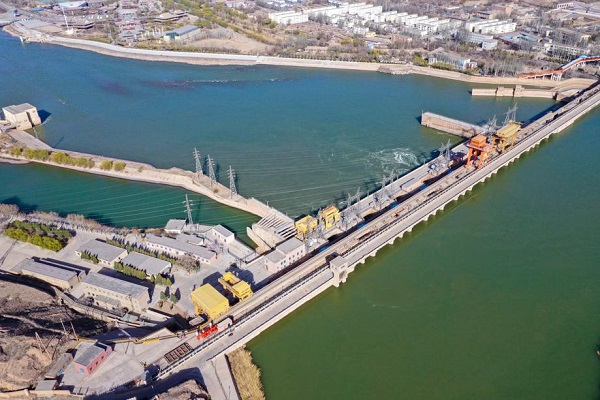China to beef up environmental monitoring of Yellow River

In April, the Yellow River is all green in the Ningxia Hui autonomous region. [Photo by Tian Manchao/For chinadaily.com.cn]
China plans to beef up environmental and ecological monitoring in the basin of the Yellow River, the country's second longest river, as one of many intensified efforts to conserve the watercourse dubbed as the "mother river" of China, according to a draft law.
Based on consultation with local governments, environmental authorities of prefecture level in the basin should draft a list of major groundwater polluters and make it public, says the draft law submitted on Tuesday to an ongoing session of the Standing Committee of the National People's Congress, the country's top legislature, for a second reading.
A draft law usually receives the readings at the top legislature before being put up for vote.
The draft stipulates that it will be compulsory for major groundwater polluters to equip online automatic monitoring facilities. These facilities should be connected with local environmental authorities.
It also says that, without approvals from environmental authorities, no new sewage drainage outlets that discharge into water bodies in the basin can be constructed or reconstructed.
County-level governments and above should regularly comb through areas under their jurisdiction to rule out violations, it says.
According to the draft law, a series of surveys and monitoring will be rolled out at the national level to enhance conservation of the Yellow River basin.
Based on regular surveys, for example, the national natural resources authority, together with other relevant national government bodies, should set up a database on natural resources in the basin, including forest and wetland, the draft says.
It stipulates that assessments should be conducted regularly on the carrying capacities of natural resources and the environment in the basin in accordance with the dynamic database.
Regular national monitoring programs will also be rolled out to learn about the conditions of wildlife and their habitats, and the situations of water and soil loss and land desertification, all by relevant national authorities, according to the draft law.
- Chinese president appoints new ambassadors
- Top legislature schedules upcoming session in October
- China's top legislator meets Liberian senate president pro tempore
- China's top legislator meets Cambodia's National Assembly president
- China urges Group of Friends of Neutrality members to reform and improve global governance



